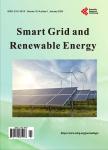Neural Network for Estimating Daily Global Solar Radiation Using Temperature, Humidity and Pressure as Unique Climatic Input Variables
Neural Network for Estimating Daily Global Solar Radiation Using Temperature, Humidity and Pressure as Unique Climatic Input Variables作者机构:Grupo de Investigació n en Tecnologí as Informá ticas Avanzadas Facultad Regional Tucumá n Universidad Tecnoló gica Nacional Tucumá n Argentina Facultad de Ciencias Exactas y Tecnología Universidad Nacional de Tucumá n Tucumá n Argentina
出 版 物:《Smart Grid and Renewable Energy》 (智能电网与可再生能源(英文))
年 卷 期:2016年第7卷第3期
页 面:94-103页
学科分类:0202[经济学-应用经济学] 02[经济学] 020205[经济学-产业经济学]
主 题:Daily Solar Radiation Estimation Empirical Solar Radiation Model Feedforward Backpropagation Neural Network Regression Analysis
摘 要:Solar radiation is one of the most important parameters for applications, development and research related to renewable energy. However, solar radiation measurements are not a simple task for several reasons. In the cases where data are not available, it is very common the use of computational models to estimate the missing data, which are based mainly on the search for relationships between weather variables, such as temperature, humidity, precipitation, cloudiness, sunshine hours, etc. But, many of these are subjective and difficult to measure, and thus they are not always available. In this paper, we propose a method for estimating daily global solar radiation, combining empirical models and artificial neural networks. The model uses temperature, relative humidity and atmospheric pressure as the only climatic input variables. Also, this method is compared with linear regression to verify that the data have nonlinear components. The models are adjusted and validated using data from five meteorological stations in the province of Tucumán, Argentina. Results show that neural networks have better accuracy than empirical models and linear regression, obtaining on average, an error of 2.83 [MJ/m2] in the validation dataset.



